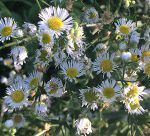Leaves of Thyme
Speaking of thyme, it is a very old and reputable aromatic plant, valued both as a kitchenand as a medicinal herb. Due to its high thymol content it has been gathered by field doctors to dress battle wounds, thyme decocts and infused oils have antiseptic and cicatrizant effects. Maybe this is the reason why sprigs of thyme symbolized braverythroughout the Antiquity and the Middle Ages.
All I learned about thyme growing up was that it tastes great on chicken and the fresh herb is better than the dried variety. Little did I know about its medicinal properties and its cleansing essence.
Thyme has a glowing resume, it heals, it disinfects, it flavors food, it purifies the air, it helps with women’s health concerns (don’t use while pregnant, it encourages bleeding), it soothes a cough or a sore throat and its nectar makes great honey. If you have doubts about the usefulness of thyme oil as a disinfectant, give it a little whiff: any substance that smells like paint thinner should be effective in killing bacteria.
It would be humble and self effacing if it weren’t for the powerful fragrance it exudes any time you brush against it.
Despite its humble demeanor, in my experience thyme hasn’t been an easy herb to grow. It never survived winter, snubbing its perennial designation, it hates heat, which is strange given its original habitat and it never seemed to thrive, not even in full sun, it just simmers down and disappears quietly, making you look for the place where you planted it and question if you really ever had it in your garden at all.




 Previous Post
Previous Post Next Post
Next Post




